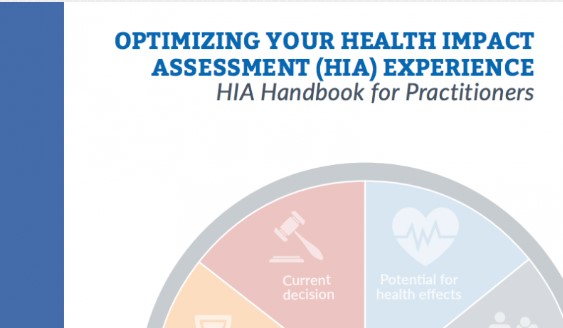Are you an individual or organization thinking about conducting a health impact assessment (HIA)? Or do you have experience conducting HIAs?
The Kansas Health Institute HIA team has created a practical Handbook to help individuals of all experience levels anticipate and address potential challenges during the HIA process. To help readers understand how solutions can be applied in practice, the Handbook includes examples from several HIAs across the country and abroad. It also directs readers to existing HIA-related resources that can be used to address challenges or provide examples. Furthermore, the Handbook identifies opportunities for using HIA steps and tools to advance Community Health (Needs) Assessment and Foundational Public Health Services efforts.
Step 1: Screening
Screening is the first step of an HIA process. It determines whether an HIA is feasible, timely and would add value to the decision-making process.
Step 2: Scoping
Scoping is the second step of the HIA process. It determines what health impacts are going to be studied, which populations will be included in the study, and the methods that will be used to conduct an HIA.
Step 3: Assessment
Assessment is the third step of an HIA process. It includes a summary of existing (baseline) conditions and analysis of potential health impacts.
Step 4: Recommendations
Recommendations is the fourth step of an HIA process. Recommendations are a way to suggest action that can enhance positive health effects and mitigate potential negative health effects related to the proposed plan/project/policy.
Step 5: Reporting
Reporting is the fifth step of an HIA process. It includes the distribution of findings to decision-makers and others involved with the HIA.
Step 6: Monitoring/Evaluation
Monitoring/Evaluation is the sixth step of an HIA process. This step helps determine future health impacts resulting from policy changes and assesses the HIA process, results and lessons learned.
